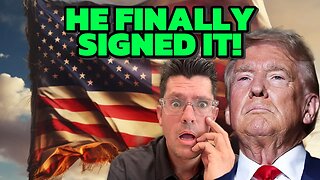Premium Only Content

Paisa kamao | e-commerce by dreams21 | Amazon virtual assistant | private label
Have you ever thought about starting your own product brand? Believe it or not, you don’t need to be rich to have your own unique line of products. In fact, tons of ordinary people create their own brands and it’s a lot easier than you think.
Sellers call these private label brands. Selling them as your own products is one of the best strategies for Amazon sellers. When you sell items with unique features and branding you’ll reduce your competition.
If you’re curious about this strategy you’ve come to the right place. Below is our complete guide to selling private label on Amazon.
What is Private Label?
A private label product is made by another manufacturer but sold under your unique brand name. You can choose to modify an existing item (and make it your own) or create an entirely new product from scratch.
While coming up with a brand new product can be exciting, it’s a lot riskier since there’s no way to tell if there’s actually a market for it. So, what a lot of successful sellers do is look for popular products and then find ways to improve upon them.
For example, people commonly complain about one aspect of it. Now, imagine if you could sell a version of that product through your personal brand that has addressed or eliminated that same issue buyers are complaining about. People will associate your brand with this great new product.
This is the power of Amazon private label. By employing strategy you can quickly expand your online business and corner the market for a variety of products.
How to Get Ideas for Your Private Label Products
As we mentioned earlier, When it comes to private-label items, the best strategy is to find products that already sell really well on Amazon and improve upon them. So, before you come up with your private label product you need to start researching items on Amazon and find one that has potential.
Here’s what you need to look for in a product:
High Demand: You want an item that has a long history of good sales. This lets you know that there is a good amount of demand for it.
Low Competition: While creating your own product will help lower your competition, you still want to base your product off an item that not many other people are selling. This will make it easier for you to break into the market.
Good Profit Margins: It isn’t going to matter how many items you sell if you don’t make any money off each sale. Try to pick something that you can sell for three times your cost.
Potential for Improvement: There isn’t much point in creating your own version of something that’s already perfect. For example, there’s not much you can do to improve on books. Instead, look for items that are popular but could be tweaked to be even better.
Try to avoid more complicated items. Some examples of these include beauty products, beard oil, supplements, and electronics. If there’s an issue with these types of products it could negatively impact someone’s health or pose a danger to people. So, unless you have a lot of insurance it’s best to just steer clear of these sorts of things.
Now, you may be wondering how you’re going to figure all this out when looking at a product on Amazon. Luckily, there are some helpful tools that will allow you to quickly narrow down which items have the most potential.
AMZScout Product Database
Amazon offers millions of products on their website, so trying to find the perfect item to sell can be a little overwhelming. Luckily, the AMZScout Product Database makes finding product ideas that meet all of your criteria extremely simple.
-
 LIVE
LIVE
We Like Shooting
15 hours ago $0.03 earnedWe Like Shooting 625 (Gun Podcast)
214 watching -
 1:45:02
1:45:02
Glenn Greenwald
6 hours agoIsrael Slaughters More Journalists, Hiding War Crimes; Trump's Unconstitutional Flag Burning Ban; Glenn Takes Your Questions | SYSTEM UPDATE #504
113K126 -
 1:29:31
1:29:31
Killerperk
3 hours ago $0.36 earnedRoad to BF6. Come hang out #regiment #bf6
19.8K2 -
 LIVE
LIVE
Jokeuhl Gaming and Chat
4 hours agoDARKTIDE - Warhammer 40k w/ Nubes Bloobs and AoA
43 watching -
 LIVE
LIVE
Cripiechuccles
5 hours ago😁💚💙MOTA MONDAY WITH CRIPIE💚💙 👌SMOKING, GAMING & WATCHING FLICKS!:😁
46 watching -
 36:11
36:11
Stephen Gardner
4 hours ago🔥'Burn ALL TRUMP FLAGS’ says Tim Walz + Democrat CAUGHT rigging own election!
20.1K12 -
 10:10
10:10
robbijan
1 day agoHollywood’s Hidden Messages: Predictive Programming & What’s Next
15.7K18 -
 40:13
40:13
MattMorseTV
5 hours ago $0.45 earned🔴It's EVEN WORSE than we thought...🔴
30.2K75 -
 LIVE
LIVE
MissesMaam
7 hours agoVariety Games💚✨
80 watching -
 2:30:51
2:30:51
Sgt Wilky Plays
4 hours agoThe Finals with the Pack
13.1K